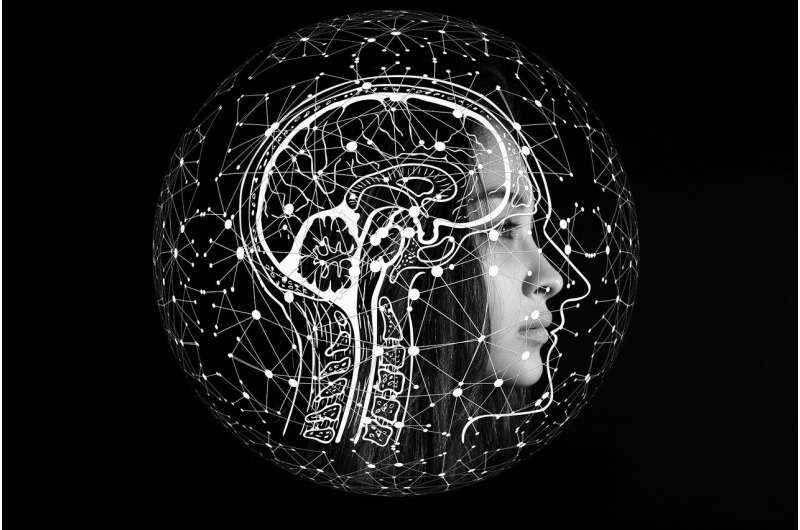
UCLA researchers have made a significant discovery showing that biological brains and artificial intelligence systems develop remarkably similar neural patterns during social interaction. This first-of-its-kind study reveals that when mice interact socially, specific brain cell types synchronize in “shared neural spaces,” and AI agents develop analogous patterns when engaging in social behaviors.
The study, “Inter-brain neural dynamics in biological and artificial intelligence systems,” appears in the journal Nature.
This new research represents a striking convergence of neuroscience and artificial intelligence, two of today’s most rapidly advancing fields. By directly comparing how biological brains and AI systems process social information, scientists reveal fundamental principles that govern social cognition across different types of intelligent systems.
The findings could advance understanding of social disorders like autism, while simultaneously informing the development of socially-aware AI systems. This comes at a critical time when AI systems are increasingly integrated into social contexts, making understanding of social neural dynamics essential for both scientific and technological progress.
A multidisciplinary team from UCLA’s departments of Neurobiology, Biological Chemistry, Bioengineering, Electrical and Computer Engineering, and Computer Science across the David Geffen School of Medicine and the Henry Samueli School of Engineering used advanced brain imaging techniques to record activity from molecularly defined neurons in the dorsomedial prefrontal cortex of mice during social interactions.
Mice serve as an important model for understanding mammalian brain function because they share fundamental neural mechanisms with humans, particularly in brain regions involved in social behavior. The researchers developed a novel computational framework to identify high-dimensional “shared” and “unique” neural subspaces across interacting individuals.
The team then trained artificial intelligence agents to interact socially and applied the same analytical framework to examine neural network patterns in AI systems that emerged during social versus non-social tasks.
The research revealed striking parallels between biological and artificial systems during social interaction. In both mice and AI systems, neural activity could be partitioned into two distinct components: a “shared neural subspace” containing synchronized patterns between interacting entities, and a “unique neural subspace” containing activity specific to each individual.
Remarkably, GABAergic neurons—inhibitory brain cells that regulate neural activity—showed significantly larger shared neural spaces compared to glutamatergic neurons, the brain’s primary excitatory cells. This represents the first investigation of inter-brain neural dynamics in molecularly defined cell types, revealing previously unknown differences in how specific neuron types contribute to social synchronization.
When the same framework was applied to AI agents, shared neural dynamics also emerged as artificial systems developed social interaction capabilities. Most importantly, when researchers selectively disrupted these shared neural components in artificial systems, social behaviors were substantially reduced, providing the direct evidence that synchronized neural patterns causally drive social interactions.
The study also revealed that shared neural dynamics don’t simply reflect coordinated behaviors between individuals, but emerge from representations of each other’s unique behavioral actions during social interaction.
The research team plans to further investigate shared neural dynamics in different and potentially more complex social interactions. They also aim to explore how disruptions in shared neural space might contribute to social disorders and whether therapeutic interventions could restore healthy patterns of inter-brain synchronization.
The artificial intelligence framework may serve as a platform for testing hypotheses about social neural mechanisms that are difficult to examine directly in biological systems. They also aim to develop methods to train socially intelligent AI.
“This discovery fundamentally changes how we think about social behavior across all intelligent systems,” said Weizhe Hong, Ph.D., professor of Neurobiology, Biological Chemistry, and Bioengineering at UCLA and lead author of the new work.
“We’ve shown for the first time that the neural mechanisms driving social interaction are remarkably similar between biological brains and artificial intelligence systems. This suggests we’ve identified a fundamental principle of how any intelligent system—whether biological or artificial—processes social information.
“The implications are significant for both understanding human social disorders and developing AI that can truly understand and engage in social interactions.”
More information:
Weizhe Hong, Inter-brain neural dynamics in biological and artificial intelligence systems, Nature (2025). DOI: 10.1038/s41586-025-09196-4. www.nature.com/articles/s41586-025-09196-4
Citation:
Striking parallels between biological brains and AI during social interaction suggest fundamental principles (2025, July 2)
retrieved 2 July 2025
from
This document is subject to copyright. Apart from any fair dealing for the purpose of private study or research, no
part may be reproduced without the written permission. The content is provided for information purposes only.













Leave a comment